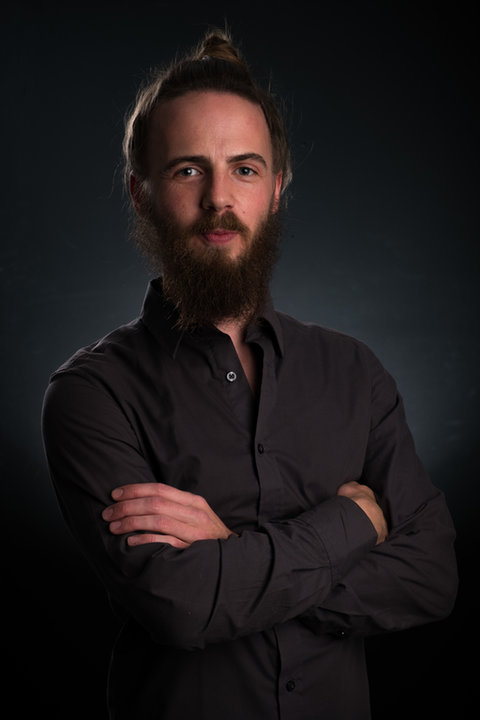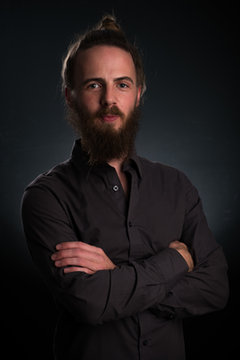ARTICLE
‘Look over the edge of your field of expertise, it’s worth it.’

Georg Spreitzer
coordinator of use case 1.3 Soya Protein Management
Biography: Georg Spreitzer is Research and Innovation Manager at Donau Soja. After growing up on a small farm in the Austrian alps and a technical education with an IT-focus, he studied Environmental Management at the University of Applied Life Sciences (BOKU) in Vienna. His work has combined broad practical skills in farming as well as scientific work in the area of Sustainable Development and the management of Natural Resources. He follows an interdisciplinary approach, combining knowledge, practices and experience from agriculture, social, technical and natural sciences.
Increase technological innovation in the cultivation and processing of protein plants, that’s the goal. Through smart farming technologies, such as decision support systems and better sensor data to optimize machine task operations, use case 1.3 Soya Protein Management aims to reintroduce and increase soybean cultivation in the EU.
1. Could you please explain the field set up of your use case and how it developed over time? Which technologies are you using for data collection and how can farmers take advantage of it?
Right from the start, we - Donau Soja and Soia Italia –worked together with IT specialists. To achieve the goal of developing a decision support system (DSS) for soybean producers, we now work in cooperation with Sysman P&S from the Italian use case 3.1 Fresh Table Grapes. Currently, we have four test fields in Northern Italy and two in Austria. Our set up includes several sensors distributed throughout the fields. The sensors measure air temperature, air humidity, wind speed and direction, precipitation along with soil moisture in three depths (10cm, 20cm, 30cm). Additionally, data on the soil structure (with electrical conductivity mapping), the harvest amount and quality indicators like protein content or humidity of the harvested grain (with Near Infrared Sensors (NIR) mounted to the combine harvester system) is gathered. All the information is supplemented by location data and can thus be displayed as a map. This provides the possibility to correlate data from various sensors to a certain location at a certain time. While an external contractor provides the sensors, Sysman P&S implements the DSS and subsequently takes care of the distribution, hosting and maintenance. ITPhotonics are the owners of the NIR sensor, which we rent for the harvesting period. Farmers can take advantage of the gathered data by estimating the ideal irrigation time and amount. Moreover, it gives them a better understanding of different field zones’ productivity or assistance with variety selection.
2. Can you explain to our readers how technology can help to make agriculture more profitable and efficient? In which way does your use case contribute to sustainability?
In my opinion, the wide application of sensors and high-end technology only makes sense in highly industrialized, intensive agricultural systems, as the production, distribution and maintenance of the infrastructure is very costly. The estimation of ideal time and amount for irrigation, based on crop models and sensors, does not only reduce water consumption but also lowers electricity use for the pumps. Furthermore, the data we collect can be used as a basis for variable rate application of fertilizers and pesticides, which means to apply them only where it is actually necessary.
3. When collaborating with other use cases like 3.1 Fresh Table Grapes, how can both sides benefit from this exchange and what are the implications for Europe when different sectors come together?
The benefit of collaboration with use cases in other sectors of the IoF2020 project, first and foremost, is to reap the hard-earned knowledge and proven infrastructure of other agricultural techniques. Collaboration allows us to apply this knowledge to an agricultural environment beyond the one it originated from. However, creating such a productive ecosystem with mutual understanding requires resources, patience, empathy and, last but not least, money.
4. Could you summarize some of your achievements so far and share challenges you were confronted with?
We are currently not able to provide exact numbers, but through our irrigation model we could already decrease water usage significantly. In terms of difficulties, we experienced that data exchange and interoperability between various machines, such as different combine harvester brands or sensors, is challenging. Even though this did not come as a surprise, it took us a lot of effort to solve those issues. And a challenge that we’re still working on, is real time mapping and and data transfer of, for instance, protein content during harvest.
5. Finally, are there some insights or recommendations you would like to share with our audience?
It is worth to have a look over the edge regarding technological innovation! While we work with soybeans, Sysman P&S works with wine and vegetables. Those agricultural systems function dissimilar in terms of production. Nevertheless, due to the IoF2020 project, we now discover the value of each other’s knowledge, experience and network. Thus, we are convinced that such long-lasting collaborations will lead to a bright future for European agriculture.
Interview with Georg Spreitzer

Georg Spreitzer
coordinator of use case 1.3 Soya Protein Management